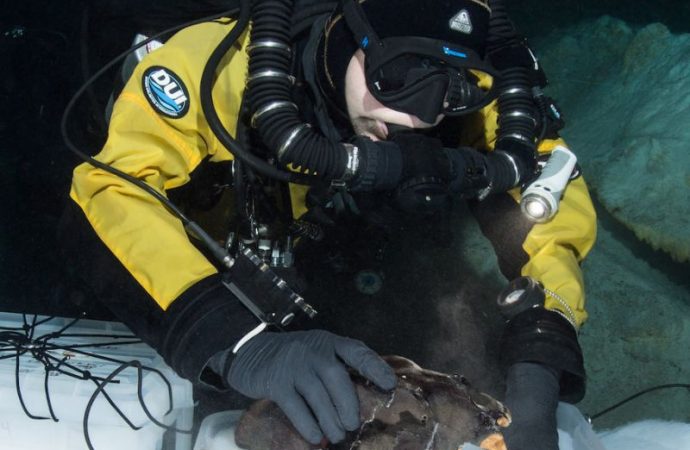Divers excavating an underwater cave in Mexico have discovered the bones of giant meat eaters that lived there during the last ice age, a new study reported.
Source: Live Science
The finding is remarkable, because few ancient animal remains survive in Mexico’s hot, tropical climate. But these ancient beasts, the short-faced bear (Arctotherium wingei) and the wolf-like Protocyon troglodytes, fell to their deaths in a deep cave, which was flooded soon after. As a result, their bones were preserved in pristine condition, the researchers said.
Both of these species were far from what scientists had considered the animals’ homes. Previously, the creatures were known only from South America. This finding shows that they also lived much farther north, or more than 1,200 miles (2,000 kilometers) away from their known habitat, about the distance from Boston to Miami.
Divers found the animal bones in Hoyo Negro, a completely submerged pit inside the Sac Actun cave system in the eastern Yucatán Peninsula. Hoyo Negro is famous for its anicent human remains; in 2007, divers found the skull and bones of a teenage girl who lived about 12,000 to 13,000 years ago.
 Exploring north and south
Exploring north and south
The discovery also sheds light on the Great American Biotic Interchange (GABI), which took place when North America connected to South America and animals from each region crossed over into new lands. Most scientists think that this connection happened about 2.5 million to 3 million years ago, Schubert said.


































Leave a Comment
You must be logged in to post a comment.